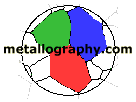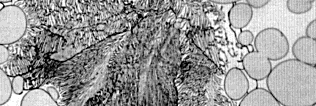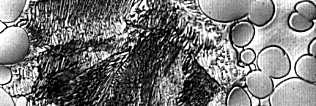 |
Differential Interference Contrast |
|---|
 |
Differential Interference Contrast |
|---|
Although incident brightfield illumination is by far the most common illumination mode (except for those who work exclusively with metals like Be, U, Cd, Zr, etc.) used by metallographers, increased use is being made of differential interference contrast (DIC) illumination. The Nomarski system is most commonly used for DIC. It brings out height differences that might not be observed with brightfield. Many years ago, height differences were revealed by oblique illumination. However, this method yields uneven illumination across the field and degrades resolution. Nomarski DIC can reveal features not visible in brightfield - not by increasing resolution but improving image contrast.
Figure 4 demonstrates the use of DIC in the examination of a tungsten
heavy-metal alloy (W-7%Ni-3%Fe) which was etched with Kalling's No. 2
reagent.

|

|
Figure 4. Microstructure of a tungsten heavy-metal alloy (W - 7% Ni - 3% Fe) etched with Kalling's No. 2 Reagent and viewed with (top photo) brightfield illumination; and, with (bottom photo) Nomarski differential interference contrast illumination. (400x)
Brightfield illumination (Figure 4 top photo) reveals the nearly pure tungsten particles in a Ni-Fe matrix phase and an undesired lamellar constituent. DIC reveals the same information (Figure 4 bottom photo) but with bolder clarity.
Go To: |
[Previous Page] |
[FAQ] |
[Home] |
[Vendors] |
|---|